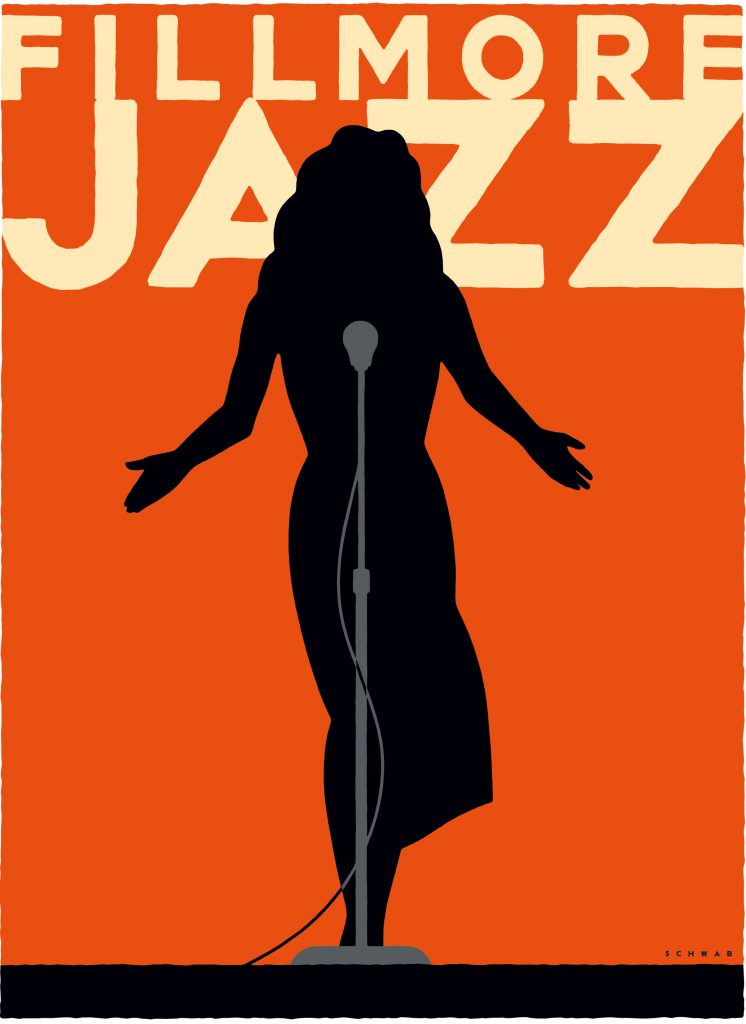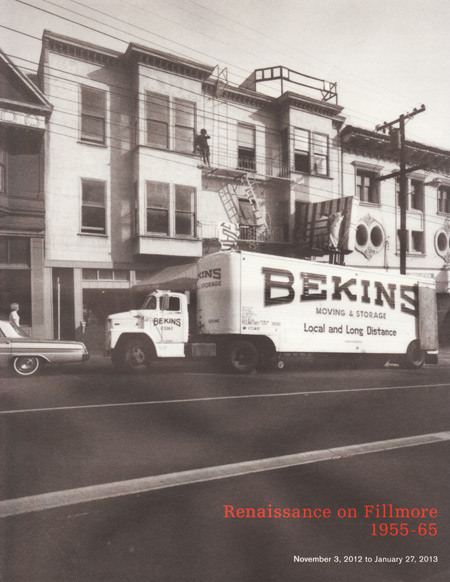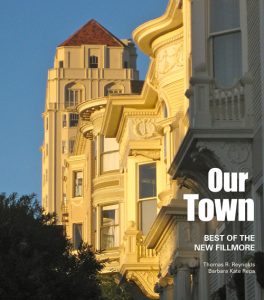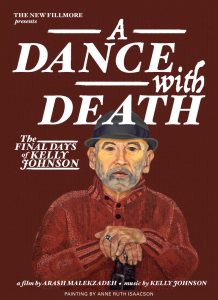ART | MICHAEL SCHWAGER
The history of Bay Area art is filled with stories of unique individuals, influential institutions and the social and political climate where artists congregated to live and create. An exhibition now at the Di Rosa Foundation in Napa tells one of those stories: the story of an exceptional group of artists in a particular San Francisco neighborhood during an especially vibrant period.
Most of the artists in “Renaissance on Fillmore: 1955-65” were relatively unknown in the mid-1950s — a transitional moment in the art world when abstract painting gave way to assemblage sculpture and both were influenced by poetry and music. Today these same artists form the foundation of modern art in Northern California and helped shape the future of American art. Their work remains remarkably vital and opens a window on the era during which it was created.
While North Beach flourished as a creative district, the Fillmore — in particular the northern portion referred to as the Upper Fillmore — was an equally important, if less publicized, locus of creative ferment and home to a remarkable and eclectic group of painters and poets. Many of these artists were affiliated, as students or faculty, with the California School of Fine Arts, now the San Francisco Art Institute.
The apartment building at 2322-2330 Fillmore was the nucleus of an artistic renaissance due to its residents and the activities that took place there. The unassuming white stucco and wood two-story structure near the corner of Washington and Fillmore contained four flats. It also had a modest backyard and even a plywood roof deck. The flats were large — seven rooms with 14-foot ceilings — and the rents small: a now-unbelievable $65 a month.
Even a partial list of the occupants from the mid 1950s through 1965 — when the building was sold and many of the artists were evicted — reads like a Who’s Who of Bay Area Beat Art and explains the building’s nickname, “Painterland”:
• artist and filmmaker Paul Beattie and his wife Dee, who were there around 1955 and 1956
• newlywed painters Joan and William H. Brown
• Bruce and Jean Conner, who shared lodgings with the poet Michael McClure and his wife Joanna briefly in 1957 before moving to their own place a block away on Jackson Street
• Jay DeFeo and Wally Hedrick, likely the building’s longest-tenured residents and its creative heart, who lived next door to the Browns and were introduced to the building by Beattie, taking his flat when he left
• Craig Kauffman, better known as an L.A. artist but who lived for a time in the flat of Jim Newman, founder of the Dilexi Gallery
• husband-and-wife Abstract Expressionist painters James Kelly and Sonia Gechtoff, who left Fillmore for New York around 1959
• the painter and musician Dave Getz, a resident between 1962 and 1964
• painter Les Kerr, who along with his wife, documentary filmmaker Mary Kerr and their son and daughter, lived there about the same time
• Ed Moses, another artist identified with Southern California, who, with his wife Avilda, took over Newman’s place around 1960.
Poet Jack Foley described 2322-2330 Fillmore as “inexpensive so artists could afford it, and when artists moved in and did their art and moved out again, they told other artists about it.” The sheer number — and talent — of the resident artists, poets and musicians transformed a “tenement building” into the place in the upper Fillmore to paint, write, play, critique, argue and party. In a 1998 interview, Hedrick recalled that “the building sort of vibrated with all of these mixed personalities … the poets came over a lot and there was a lot of bongo and chanting and sort of spontaneous musical drumming … there was a party about every weekend.”
Looking back on this unique place in the history of San Francisco art, it’s easy to get caught up in nostalgia for a time when the creativity, spontaneity and freedom with which these artists lived and worked seemed eminently more possible — and affordable. Yet looking at the art they created, now more than 50 years later, it is not nostalgia we’re filled with, but a deep and abiding respect for the beauty and power these works still exude.
Excerpted from the catalog for “Renaissance on Fillmore: 1955-65,” curated by Michael Schwager.
Filed under: Art & Design, Neighborhood History





